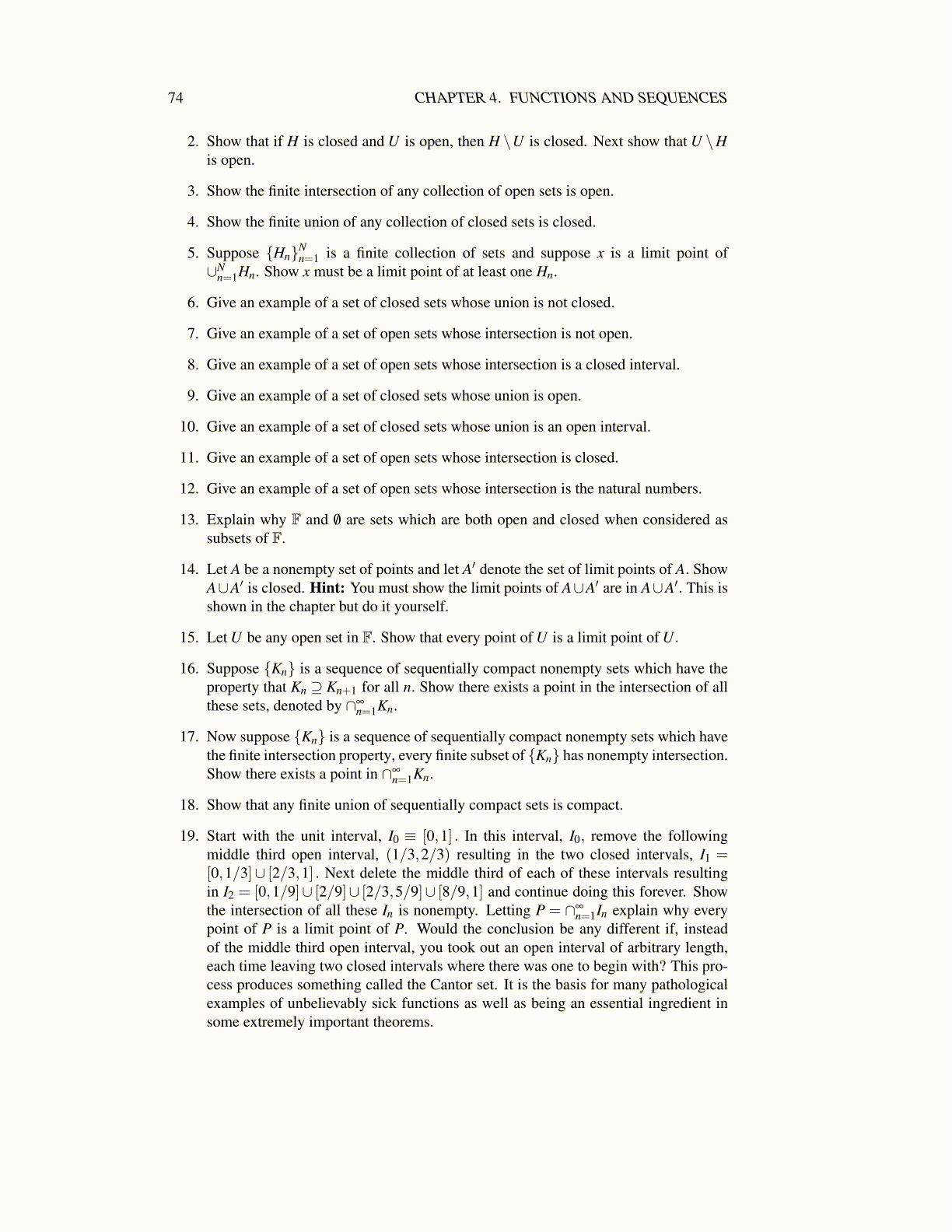
74 CHAPTER 4. FUNCTIONS AND SEQUENCES
there is no way to place an order on C. This is also the case whenever the sequence is ofpoints in multiple dimensions.
It is the concept of completeness and the notion of limits which sets analysis apart fromalgebra. You will find that every existence theorem in analysis depends on the assumptionthat some space is complete. In case of R the least upper bound version corresponds to astatement about convergence of Cauchy sequences.
Theorem 4.10.2 The following are equivalent.
1. Every Cauchy sequence in R converges
2. Every non-empty set of real numbers which is bounded above has a least upperbound.
3. Every nonempty set of real numbers which is bounded below has a greatest lowerbound.
Proof: 1.⇒ 2. First suppose every Cauchy sequence converges and let S be a nonemptyset which is bounded above. Let b1 be an upper bound. Pick s1 ∈ S. If s1 = b1, the leastupper bound has been found and equals b1. If (s1 +b1)/2 is an upper bound to S, let thisequal b2. If not, there exists b1 > s2 > (s1 +b1)/2 so let b2 = b1 and s2 be as just described.Now let b2 and s2 play the same role as s1 and b1 and do the same argument. This yields asequence {sn} of points of S which is monotone increasing and another sequence of upperbounds, {bn} which is monotone decreasing and |sn−bn| ≤ 2−n+1 (b1− s1) . Therefore, ifm > n
|bn−bm| ≤ bn− sm ≤ bn− sn ≤ 2−n+1 (b1− s1)
and so {bn} is a Cauchy sequence. Therefore, it converges to some number b. Then b mustbe an upper bound of S because if not, there would exist s > b and then bn− b ≥ s− bwhich would prevent {bn} from converging to b.
2.⇒ 3.,3.⇒ 2. The claim that every nonempty set of numbers bounded below hasa greatest lower bound follows similarly. Alternatively, consider −S ≡ {−x : x ∈ S} andapply what was just shown. If S is bounded below, then −S is bounded above and so thereexists a least upper bound for −S called −l. Then l is a lower bound to S. If there is b > lsuch that b is also a lower bound to S, then −b would also be an upper bound to −S andwould be smaller than −l which contradicts the definition of −l. Hence l is the greatestlower bound to S. To show 3.⇒ 2., also consider −S and apply 3. to it similar to what wasjust done in showing 2.⇒ 3.
2.,3.⇒ 1.Now suppose the condition about existence of least upper bounds and greatestlower bounds. Let {an} be a Cauchy sequence. Then by Theorem 4.5.2 {an} ⊆ [a,b] forsome numbers a,b. By Theorem 4.8.2 there is a subsequence,
{ank
}which converges to
x ∈ [a,b] . By Theorem 4.5.4, the original sequence converges to x also.
Theorem 4.10.3 If either of the above conditions for completeness holds, thenwhenever {an} is a monotone increasing sequence which is bounded above, it convergesand whenever {bn} is a monotone sequence which is bounded below, it converges.
Proof: Let a = sup{an : n≥ 1} and let ε > 0 be given. Then from Proposition 2.10.3on Page 27 there exists m such that a− ε < am ≤ a. Since the sequence is increasing, itfollows that for all n ≥ m, a− ε < an ≤ a. Thus a = limn→∞ an. The case of a decreasing